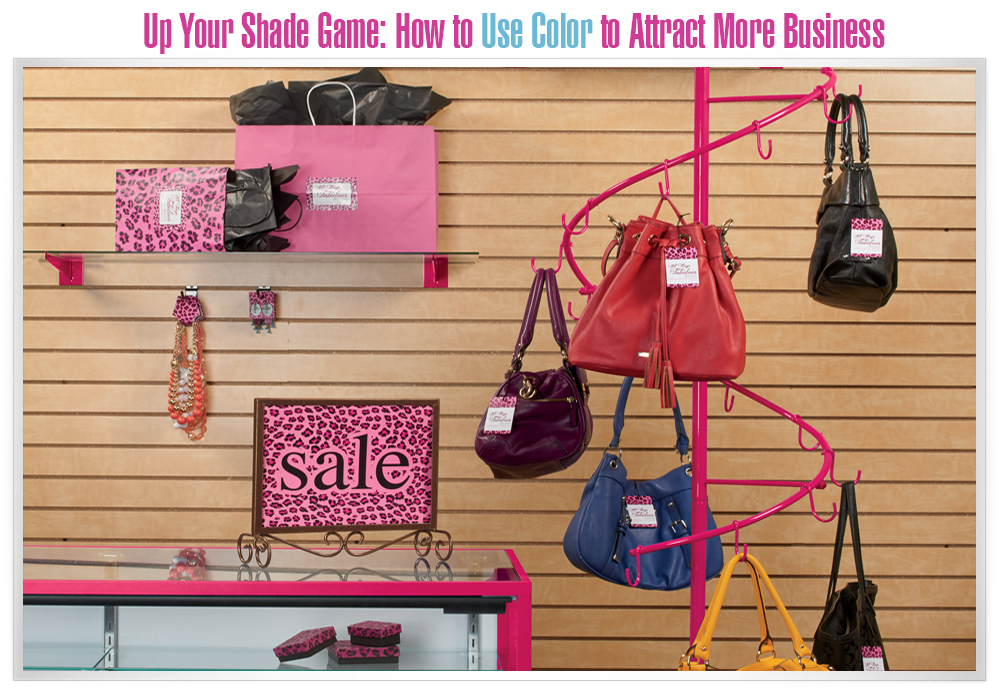Coloring Your Store

Did you know color has a major influence on a customer's choice to purchase something? It's true. According to the Color Marketing Group, a professional organization for color designers in Virginia, color alone can account for up to 85% of the reason why someone will choose one product over another.
In fact, according to Hawaii-based color psychologist and brand identity expert Jill Morton, customers' responses to the colors you use can even be something that's been ingrained in them since birth. "There are hardwires we have about colors. Blue is associated with water, green with grass, red with fire," Morton explains. And color's influence doesn't just stop at items to buy.
1. Color Can Influence More Than You Think
The color of the walls, the floors, your signs and even your employees’ outfits can influence whether or not a purchase is made. Sally Augustin, Ph.D., an environmental psychologist and internationally recognized expert on person-centered design, claims that the hue of your walls can even help you save on heating and cooling costs. Warm colors like orange, red, and yellow can cause customers to think the room is warmer than it really is, while cool colors like blue, green, and purple can cause people to think the temperature is actually cooler than it is. How's that for a crazy color-based fact?
2. So How Can You Use Color Effectively in Your Store
The goal is to persuade customers that this is where they want to shop and these are items they should buy. According to retail experts, this judgement is made within the first 90 seconds after someone walks into your store. Researchers have reported that roughly 62% to 90% of this first impression is based on color alone, so try these tips to help impact consumer purchase decisions.
3. Use Color to Stop Shoppers in Their Tracks
Attention-attracting hues like yellow, orange, and red are notorious at getting customers to stop and take notice. This is most likely a result of these colors being used on road warning signs, emergency signs, and in other important messaging that prevents danger or harm. These colors are also easier to pick up by the retina, according to Linda Cahan, a retail consultant in Oregon. Just be careful not to add too much red, since it's the most popular color for marketing.
4. Add Color into Your Brand's Narrative
Take stock of who your store is trying to attract, what you want your image to be, and how color can play a part. Then, add what you envision color-wise into the story. Let's say you're in the swimwear business, for example. Wouldn't an azure blue wall color that mimics turquoise Caribbean waters, a light colored wooden floor reminiscent of sandy beaches and driftwood-inspired shelving help customers crave a vacation and a new swimsuit? Or if you're in the business of selling updated, timeless basics to women, a subdued palate of cool neutrals mixed with shiny chrome fixtures could emphasize that your store offers classic, must-have apparel with a modern twist.
5. Go Bold, But Use Loud Colors Sparingly
Georganne Bender, a partner and retail consultant with Rich Kizer, advises that while bold colors can make a dramatic impact, too much of a good thing can subconsciously turn customers off. She suggests using bright colors on only 20 percent of your store's spaces.
6. Observe How Your Favorite Brands Use Color
Next time you go shopping, pay special attention to which stores use what colors. Blue gives off the vibe of trust and dependability. No wonder home improvement giant Lowe's uses it as the main color in their branding. Likewise, black typically signifies elegance and sophistication. Perhaps that's why makeup companies across the entire price spectrum use it in their packaging. White can stand for modernity and honesty, which is probably why tech companies like Apple and skin care companies like Dove both favor it in their products and in their branding.
- Choosing a Location
- How to Select Suppliers
- 7 Steps to Starting a New Business
- Layout Your Store
- Coloring Your Store
- Naming Your Store
- Must Have Items
- Turn Your Store Opening into an Exciting Event
- Choosing What to Sell
- Store Opening Checklist
- Licensing a Business
- Store Opening Guide
- Displaying Hair Bows
- View Additional Articles
-
Share This Article
-




